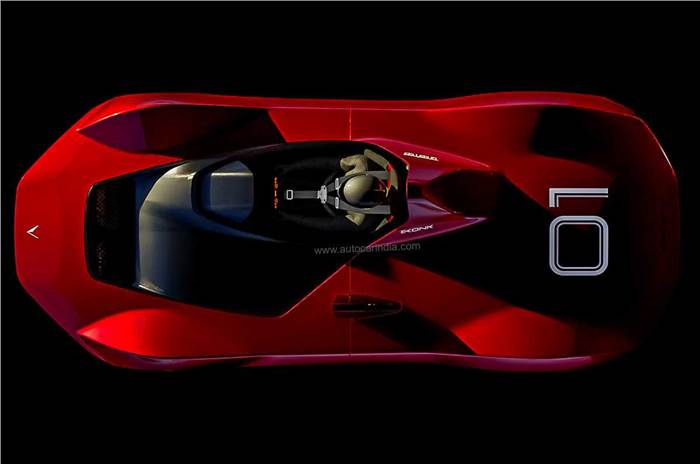Vazirani Automotive has unveiled the Ekonk – an all-new, fully-electric, single-seater hypercar. The Ekonk is Vazirani’s second model, after the Shul concept that was showcased in 2018 at the Goodwood Festival.
Weighs just 738kg and claims a top speed of 309kph
Features innovative battery cooling tech
Vazirani Ekonk: an overview
Called the Ekonk, company founder Chunky Vazirani says the name signifies the company’s real beginning. "In Indian scriptures, Ekonk signifies the beginning of the divine light – the Big Bang,” he says. “For us, Ekonk signifies our real beginning, where, for the first time, design and innovation come together. It’s our first vehicle that’s alive."
A major talking point of the Ekonk is the fact that it is a single-seater car. Earlier this month, we reported that the Ekonk could be a single seater, going by its low weight and the EK lettering on the side, which means 'one' in Hindi. This has now been confirmed by the company.
The Ekonk is said to be very aerodynamic, with one of the lowest drag coefficients for vehicles of its kind. That’s the reason for its fluid bodywork and covered rear wheels.
Vazirani Ekonk: under the skin
Thanks to its carbon-fibre body construction, the Ekonk weighs just 738kg, making it the lightest electric vehicle ever made, according to the company. With a power output of 722hp, it’s very close to hitting the 1:1 power-to-weight ratio.
Vazirani Automotive has tested the Ekonk at the recently inaugurated NATRAX facility near Indore, achieving a 0-100kph time of just 2.54sec and a top speed of 309kph. Furthermore, Vazirani intends for the Ekonk to be a pure driving experience, which is why electronic driver aids have been left out from the car.
The company also says the Ekonk is equipped with a bespoke cooling solution for its batteries, which it says draws inspiration from biomimicry (studying how animals and humans use breathing to regulate their body temperatures) and some ancient Indian manufacturing techniques.
However, the company has not released any details other than the fact that it is dubbed DiCo and is a direct-to-air cooling system as opposed to liquid cooling, which most EV manufacturers use to keep its batteries cool. Vazirani says this makes the EV lighter, faster, safer, and cost effective. But more importantly, it is also claimed to increase the range of the EV.
Vazirani Automotive: background
Vazirani Automotive was founded in 2015 by Chunky Vazirani, a former Rolls-Royce and Jaguar employee. Based in Mumbai, Vazirani Automotive’s vision is to “create next-generation electric vehicles and technology that would put India on the world map of extreme vehicles.”
The Shul concept in 2018 was the brand’s first model, which has been now followed up by the Ekonk electric hypercar. Vazirani says the technology and learnings from the Ekonk will be seen in the production version of the Shul, which the brand is currently gearing for. After that, the Ekonk might enter production as well, albeit in limited numbers.
Also see:
Vazirani Ekonk electric hypercar image gallery
Vazirani Automotive displays Shul hypercar in India
Vazirani Automotive opens new design studio for electric vehicles






Comments
Member Login
Personal Details
No comments yet. Be the first to comment.